It is advisable to consult your doctor before purchasing an orthosis.
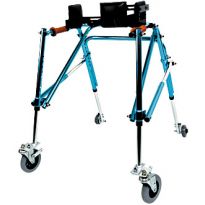
- Wrist orthoses for the left hand
- Wrist orthosis for the left hand
- Types of walking aids
- Choice between fixed and rolling walkers
- Diverse designs
- Which accessories can be used?
- Description
- Indications for use:
- symptoms of the disease
- Rehabilitation methods*.
- massage
- Vojta therapy
- VOJTA THERAPY
- water aerobics
- Underwater traction
- Paraffin therapy
- PST static parapodium NEW
- Orthoses for children with cerebral palsy and other movement disorders - dynamic parapodium
- Benefits of walking aids for children with cerebral palsy
- How walking aids work for children with cerebral palsy
- sign up for our newsletter
- Walkers for children with disabilities
- How to choose a walker for a child with cerebral palsy?
- Before you buy an orthopedic walker
- 'Palm' - Orthopedic finger support after a stroke
- Stroke care
- How is the orthosis used?
Wrist orthoses for the left hand
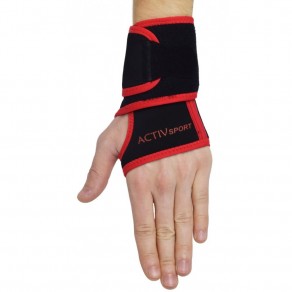
Injuries (sprains, strains), inflammation of the wrist, degenerative changes in the wrist, prevention during sports, osteoarthritis.
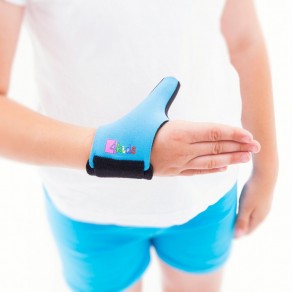
Sprains, inflammation of the thumb, damage to the collateral ligaments of the thumb joint, damage to the thumb tendon, rehabilitation after cast removal
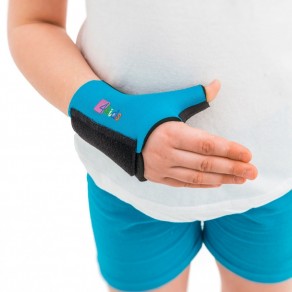
Dislocated thumb, ligament and tendon injuries of the thumb, inflammatory and rheumatic diseases in the thumb area, fractures in the thumb area, collateral ligament injuries of the metatarsophalangeal joint of the thumb (skier's finger)
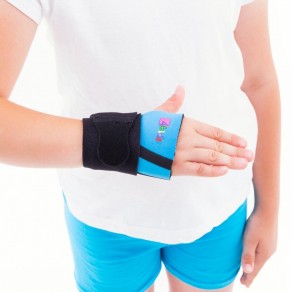
Wrist injuries, inflammatory processes of the tendon sheaths, degenerative and inflammatory changes in the wrist, prophylaxis in sports: increasing pressure and shock resistance, protection against bruises and torn ligaments.
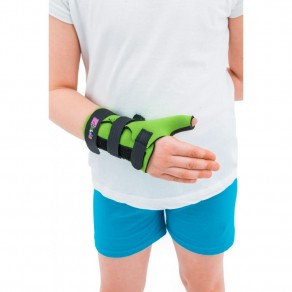
Wrist orthosis for the left hand
The wrist brace for the left hand differs from the brace for the right hand in its symmetrical design. The manufacturer has developed a range of models to meet the individual needs of different patients with different levels of injuries. The orthoses meet the highest quality and safety requirements and are manufactured using modern materials and technologies.
The wrist is the articulating connection between the bones of the forearm and the hand, which is responsible for the mobility of the hand and fingers. Damage to the wrist can cause disability, pain and inflammation, impairment, and loss of limb control. The carpal joint is susceptible to injuries and degenerative diseases caused by age-related changes or heavy physical stress.
Types of walking aids
There are four basic groups of walking aids for people with cerebral palsy:
- Fixed walking aids in the form of a frame with legs that need to be completely repositioned. These models can be used by a child who needs to temporarily rest his legs. For safety, the legs of the walking aid are equipped with non-slip pads. The advantages of the product are the simplicity and lightness of the design, affordable price.
- Go. Similar to the previous type of footstools, but to move with them, the right and left sides of the body must be moved alternately.
- On two wheels. This type of walker has wheels on the front supports. When moving, the child lifts the near part of the structure. Rear-facing walking aids must be used under adult supervision.
- Rollator-like walking aids. This model is equipped with four wheels and a system of mounts and supports for the child's body. Some versions also have a seat.
Choice between fixed and rolling walkers
When choosing a walking aid, it is important to consider the child's diagnosis, balance ability, age, height, weight, level of independence and physical development, as well as the type of body support needed. For comfortable and safe mobility, the products are equipped with brakes, orthoses, attachments and adjustment options, lifts, seats and handrails. Foldable devices are available for easy storage and transport in the car. You can purchase a walking frame for cerebral palsy, complete with special shoes. Rollator prices depend on the brand, model, and additional features.
Walking aids for children with cerebral palsy are available in aluminum, steel and alloys. The additional equipment consists of plastic, rubber, polymers and fabrics. The supports are mechanically strong, stable and safe, and the devices are easy to assemble and dismantle, wash and disinfect.
Diverse designs
Depending on the design, there are different types of walking aids for children with cerebral palsy:
- orthopedicThe main goal of these walking aids is to improve the ability to stand and walk without assistance. Their main advantage is that the pressure on the child's spine is significantly reduced.
- Baby walkersBaby walkers allow the child not only to move but also to jump without increasing pressure on the shoulders.
- Rollators are equipped with multiple wheels and allow greater acceleration without damaging the frame thanks to a manual braking system that works on the same principle as a bicycle. These devices have a seat with special crossbars for resting while walking and a basket for storing items.
- stroller are usually equipped with a more stable crossbar on which the child can be placed and transported at any time. With the help of the handles, the child can move independently.
Now let's look at the classification of baby walkers according to their functionality. We differentiate between these types of devices:
- Fixed or, as they are also called, non-running, installed in front of the child. Movement is possible within a fixed framework.
- When used with. Pacemaker The child is moved by pushing the walking aid. This type of locomotion is faster compared to the first.
- Universal devices They combine the functional features of walking aids and rollators.
- Two-stage (bi-level) are used not only for walking, but also to support the child when getting up by attaching them to a specially provided handrail and to pull the child higher in a second support.
Which accessories can be used?
Some organizations specialize in the production of rehabilitation equipment and sell spare parts, various accessories and consumables for walkers.
You can choose from the following accessories:
- flexible ends for baby walkers in different diameters and colors;
- handles, silicone rollers;
- straps;
- seats;
- fittings;
- Wheels;
- other spare parts.
Description
The orthosis is a modern alternative to the plaster bandage. With this aid, the load on the painful joint or the entire leg is significantly reduced and evenly distributed across the leg. Rehabilitation with the help of an orthosis shortens the recovery process many times over.
The orthosis is made in the form of a cuff covering the hand, forearm and shoulder from a thermoplastic sheet material (polyethylene - low pressure polyethylene, high pressure polyethylene, polypropylene), etc. by vacuum forming and fasteners.
Manufactured from individual plaster casts made under the supervision of an orthopedic surgeon.
Indications for use:
- Spastic and flaccid paralysis, also as a result of cerebral palsy,
- muscle paralysis of the upper limbs to restore functional position,
- Immobilization after operations on the elbow to avoid deformities,
- in inflammatory and degenerative diseases of the elbow joint,
- false joints of the forearm,
- Forearm and wrist paralysis.
© 2022, PHARMA SI PLUS LLC, IRN: 7118504936, KP: 771501001, OGRN: 112715400560
Processing of personal data
Graduated from Saratov State Medical University in 1996. Completed medical studies at Saratov State Medical University.
From 1996 to 1997 he completed an internship at St. Petersburg State Medical University, where he specialized in general medicine. Internship at the St. Petersburg Institute for Advanced Medical Studies in the specialty 'traumatology, orthopedics and prosthetics'.
From 1997 to 2008 he practiced as a trauma surgeon in St. Petersburg. – From 1997 to 2008 he worked as an orthopedic traumatologist at the Prosthetics and Orthopedics enterprise in Penza, from 2000 he was the head of the medical department of this enterprise. He repeatedly received advanced training courses at leading companies in Russia and abroad.
Since 2008. – Works in the orthopedic industry Moscow Energia Ltd, trained in Germany, deals with complex innovative orthoses.
2010-2012 – Head of the Training and Rehabilitation Center of Medi Rus Ltd. – Head of Medi Rus Ltd Training and Rehabilitation Center Co-author of 6 scientific papers.
symptoms of the disease
The most common symptoms of cerebral palsy are limitation of movement (or lack of movement), movement disorders (repetition of the same actions with arms, legs or head), inability to keep the body upright and move independently, as well as delayed psychomotor development, behavioral disorders (symptoms of aggression and self-harm ), reduced intelligence and epilepsy. These symptoms can vary depending on the degree of brain damage.
In our country, the classification proposed by neurologist Ksenia Semenova is used, which distinguishes 6 forms of cerebral palsy:
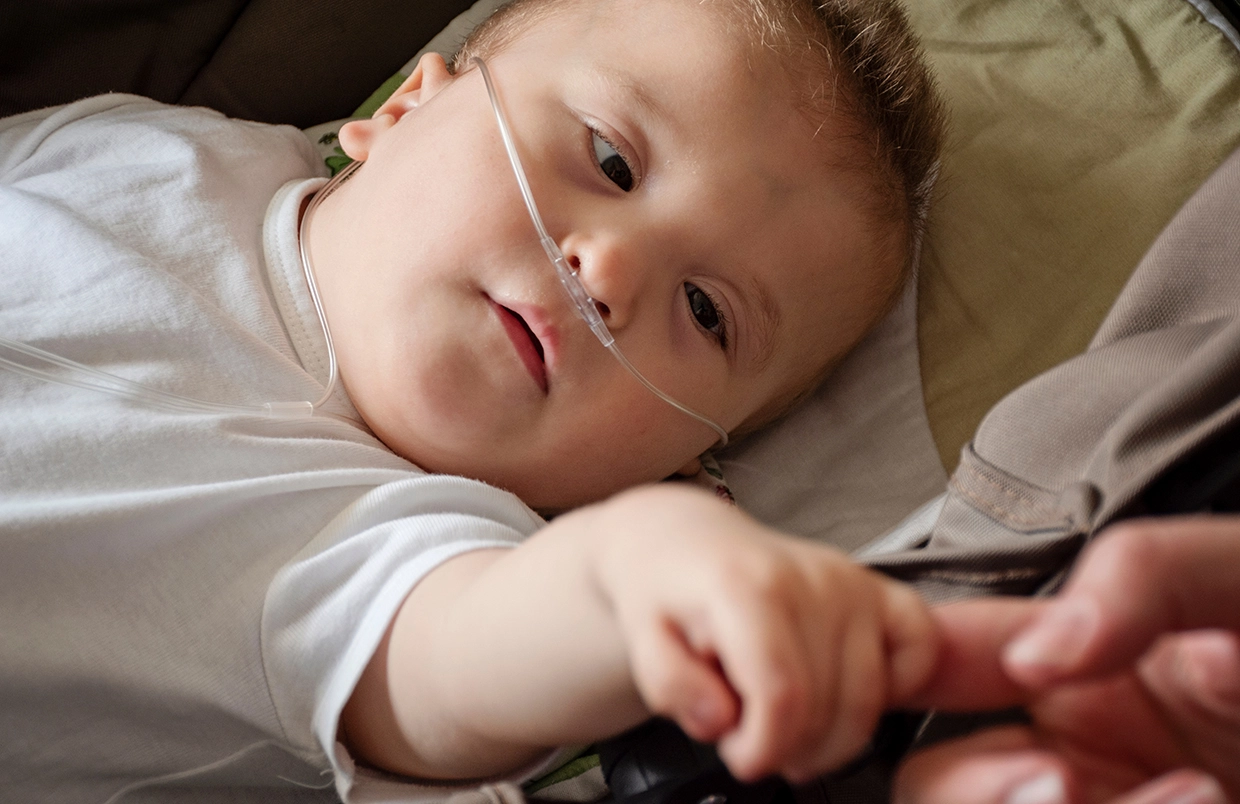
- 1. spastic diplegia;
- 2. double hemiplegia;
- 3. spastic hemiplegia;
- 4. atonic-astatic
- 5. ataxic;
- 6. hyperkinetic.
The International Motor Function Assessment System (GMFCS) is also used to diagnose the condition:
- Step 1: The child walks independently and without restrictions.
- Level 2: It comes with restrictions.
- Level 3: uses manual means of locomotion.
- Stage four: The child does not walk independently but relies on a support while sitting.
- Stage five: The child lies down and is unable to change his position independently.
Rehabilitation methods*.
The form of rehabilitation depends on the form of cerebral palsy and the degree of motor impairment. So far, the following methods have proven successful in Moscow's specialized clinics

massage
Serves to normalize muscle tension. It has its own special feature: it affects trigger points, the entire body or reflex and segmental zones. The massage should therefore be carried out by qualified professionals who have experience in the rehabilitation of patients with cerebral palsy.
Vojta therapy
It is named after its inventor, the Czech physician Professor Vojta, who in the middle of the last century proposed fixing the movements of patients with cerebral palsy at the reflex level. Vojta therapy is most effective in infancy when reflexes are not yet fully developed.
VOJTA THERAPY
Special devices called standing machines are used for a variety of exercises. These allow the body to gradually get used to sitting in the correct upright position in the room. Special exoskeleton suits are used to adapt to certain postures and to supplement the load on the musculoskeletal system.
water aerobics
The temperature of the swimming pool must be between 36-38°C. To improve joint mobility and muscle relaxation, patients perform exercises with elements of diving and snorkeling under the guidance of a trainer.
Underwater traction
This treatment takes place in a special tub in which a mechanism is installed that locks the patient's legs and gradually contracts the shoulder flange. Traction is particularly effective for patients with posture and pain problems.
Paraffin therapy
This is a form of heat therapy that uses paraffin heated to 50°C. It can take the form of foot and hand baths as well as application to trigger points. Paraffin therapy for cerebral palsy promotes blood circulation, relieves muscle spasms and improves peripheral nerve conduction.
PST static parapodium NEW
A passive rehabilitation support system that allows the person to assume a standing position without the additional help of other aids (crutches, canes, etc.), for patients with spinal cord injuries (including the cervical spine), cerebral palsy and various neurological diseases requiring complete or cause partial paralysis of the upper and lower limbs.
The medical device must provide stable support to the disabled person in a static position (without external assistance) and also promote their orthogonal (natural, upright) posture.
- – Incorporated into Order No. 878n dated October 23, 2019 of the Ministry of Health of the Russian Federation; – Incorporated into Order No. 788n dated July 31, 2020 of the Ministry of Health of the Russian Federation;
- – Included in the Federal List of technical means of rehabilitation (8-09-43 apparatus for lower limbs and trunk (orthosis)).
Orthoses for children with cerebral palsy and other movement disorders - dynamic parapodium
Orthopedic devices are used to restore lost function to limbs. They are also called technical rehabilitation devices (BRT), including orthoses for children with cerebral palsy and adults with disabilities. The orthoses have a wide range of functions and are intended for the treatment of patients with diseases of the musculoskeletal system and neurological diseases.
A dynamic parapodium (hereinafter referred to as a crutch) improves the quality of life of a person with movement disorders. Thanks to the Parapodium, a disabled person receives real help on the way to his or her activation. The Parapodium is an excellent option for walking with muscle strength deficits and impaired motor coordination. Training with an orthosis for children with cerebral palsy and other pathologies is indicated not only in terms of partial or complete restoration of basic motor functions, but also.
● delaying the progression of impairment;
● Prevention of the development of pathological processes in the form of secondary diseases;
Restoration and development of daily living skills, etc.
Additional benefits of using a walker for children with cerebral palsy and adults with disabilities can be found on the homepage.
Benefits of walking aids for children with cerebral palsy
These are special technical devices that your child can use to learn to walk. The walking aid offers your child the following important benefits:
- It stands on its feet, its body is in the correct position in space so that the load on the musculoskeletal system is not too great;
- The devices are equipped with support buckles that prevent your child from rolling to the side and falling out of the walker;
- The affordable Crocodile walking aid for cerebral palsy puts strain on the joints, back and leg muscles, so your child learns to walk much faster;
- Your child will gain confidence in their abilities and will not be afraid of falling, allowing them to focus on improving their skills;
- The baby walker enables your child to take their first steps independently so that they can soon walk without your help.
Order a walking frame for children with cerebral palsy at an affordable price. There are different types of these devices on the market, so it is advisable to focus on your specific needs: the age and weight of your child, contraindications, physical capabilities and so on. Ask your physiotherapist for advice on which walking aid you should choose.
How walking aids work for children with cerebral palsy
You can order walkers for children with cerebral palsy with delivery by pre-selecting the product that is right for you. Check out the options offered in detail:
- Walking aids. They allow the child to move alternately on the right and left side. This feature is the reason a walking aid is called a walker.
- Non-walking aids. They are constructed with a one-piece frame. It can be easily pushed in front of you, moving forward gradually. The child is inside this structure and cannot fall out.
- Universal baby walkers. They can be walker or non-stop. Special locks allow you to choose the most suitable type.
- Double-decker baby walkers. They are equipped with a special handrail at the bottom. Your child can get up from the floor and get into the walker independently. It comes into the upright position without your help.
You can buy a rollator for children with cerebral palsy from us. You can find out how much the equipment costs by contacting our consultants. We organize delivery of goods in Moscow and the surrounding area in the shortest possible time, so working with us will be as convenient as possible!
sign up for our newsletter
Stay up to date with special offers, the latest news and updates in the World Rehab online store.
Walkers for children with disabilities
As with adults, a distinction is made between fixed, back-to-back and universal baby walkers. These walkers are needed by sick children when they are recovering from an injury or illness, but also after any type of surgery. Unlike crutches, it is much easier for a child to walk with a walker because less effort is required to stabilize the body - walkers are very stable. These walkers and supports are light in weight (about 2 kg), but at the same time they are quite robust - the estimated load can be up to 100 kg, which is more than enough for a walker. All models are height adjustable (in 2.5 cm increments) and can be adapted to any body size.
Among the various rehabilitation options for children with cerebral palsy and movement disorders, doctors distinguish special models of walking aids for children with cerebral palsy. These are rollators, which means they have wheels. The rear pair of wheels is equipped with a stabilizer that prevents the child from rolling backwards, making them ideal for standing and preventing the child from falling over. However, there are also products that can be used for sitting.
The carpets on this page are equipped with additional pelvic and chest support, knee and ankle supports and seat belts. This results in an anatomically correct and comfortable position for the child, relieving painful and weak joints and facilitating movement. Walking with a walker for cerebral palsy improves blood circulation in the body, normalizes blood pressure and general well-being - the child feels more comfortable and confident, which helps speed up rehabilitation and learning to walk.
How to choose a walker for a child with cerebral palsy?
First of all, choosing a walker for a child with cerebral palsy is a responsible and serious matter. If you choose the wrong and unsuitable baby walker, you can
- Stability. The walker should have a strong and stable base, and it is good if there is a mechanism to support the back against tipping over.
- Comfort. You should choose a stroller that is appropriate for your child's size, not too small and not too big. The child should feel comfortable in the stroller.
- Adjustability. The car should be adjustable in height and width and have a narrow frame.
- Accessibility of the attachments. For children who cannot yet walk, choose models with secure back and leg rests and seat belts.
- Simple controls. Your child should be able to easily control the walker and move forward and sideways.
Before you buy an orthopedic walker
Before purchasing a walker for your sick child, you should consult your child's doctor. Baby walkers vary in type, design and movement, and a model that is suitable for one child is not always suitable for another.
We also recommend watching:
'Palm' - Orthopedic finger support after a stroke
Hand orthoses can relieve tension and restore softness and flexibility to the hand. It consists of a 3 to 5 mm thick plastic cap that is modeled on the outline of a finger or hand. Wide elastic bands are attached to the toes, heel and wrist to keep the hand in place. The tension of the elastic bands is adjustable with Velcro fasteners.
Stroke care

Price: from 1,100 rubles/day
Lubertsy, Moscow region.
+7 (499) 281-63-80

Price: from 850 rub.
Odintsov region, Maryino
+7 (495) 766-40-55

Price: from 800 rubles. per day
Shchekolkovsky district, Suponovo
+7 (495) 774-24-36
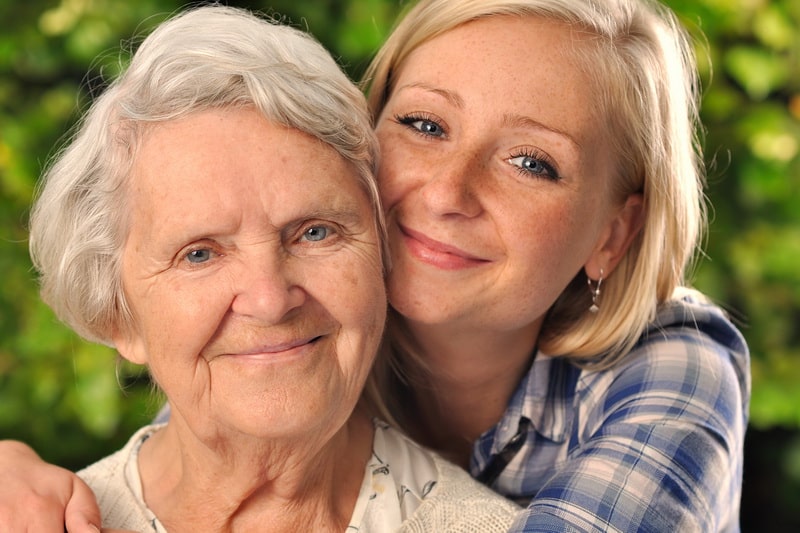
Price: from 1,000 rubles per day
Moscow, Mosrentgen district
+7 (495) 095-00-10

Price: from 800 rubles per day
Saratov, Volga district
+7 (8452) 34-61-04
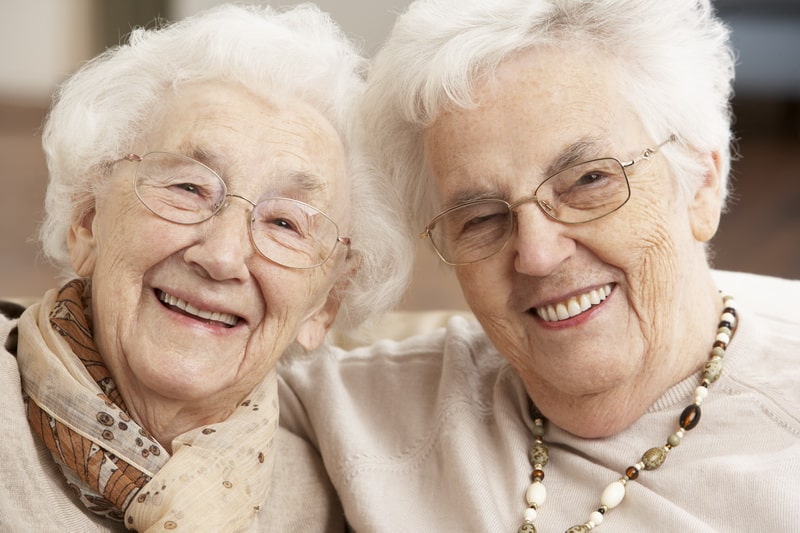
Price: from 500 rubles per day
Altai Territory, Aleysky R region
8 (800) 700-38-09
How is the orthosis used?
Before using the palm brace, the patient's hand should be open and each finger extended. Since the patient cannot do this himself, the help of the nursing staff is required. Stroking and massaging can help overcome muscle resistance. This further 'warms up' and relaxes the muscles.
After this preparation, the patient's outstretched hand is placed on the base of the orthosis with the dorsal side facing upwards. The pads are pressed against the plastic 'fingers' of the orthosis. The fingers are firmly secured with rubber bands. The wrist and wrist pads are fixed in the same way.
The palm orthosis is manufactured in two versions. The first model is a flat, flexible plate in which the patient's hand and fingers are held in a straight position. This allows the hand to be stretched (wrist extension).
Another model of the orthosis is equipped with a sliding segment on the wrist. This stretches the hand and fingers and allows hyperextension of the wrist. The flexion angle in this case corresponds to the anatomical norm of a healthy person. Training in this position helps prepare the hand for more complex movements in the later recovery phase.
The hand-toe support is used in the rehabilitation of patients with the following diagnoses:
Read more:- Walking in medium heels.
- amputation set.
- Toe movement in children.
- Causes of tiptoe walking in babies.
- Paraparesis - what is it?.
- tunics.
- ribbons for children.
- What is an orthosis?.
